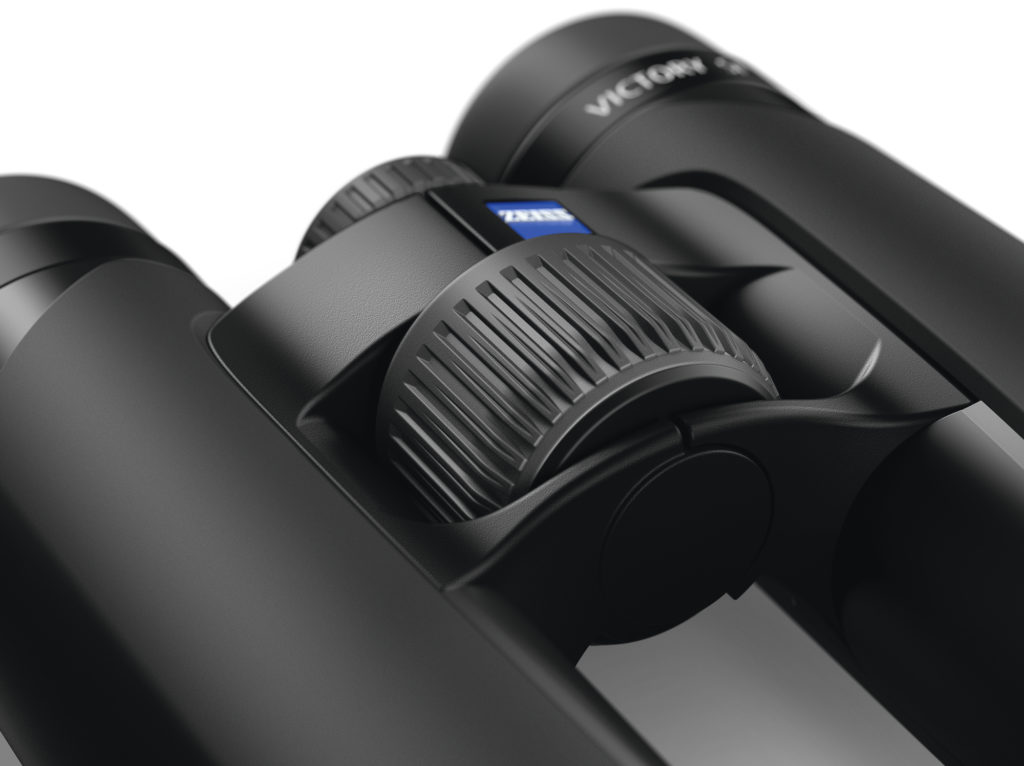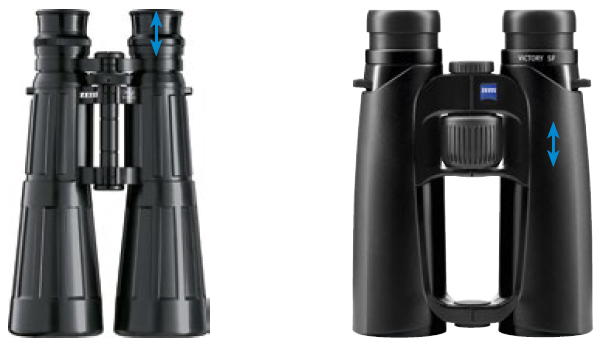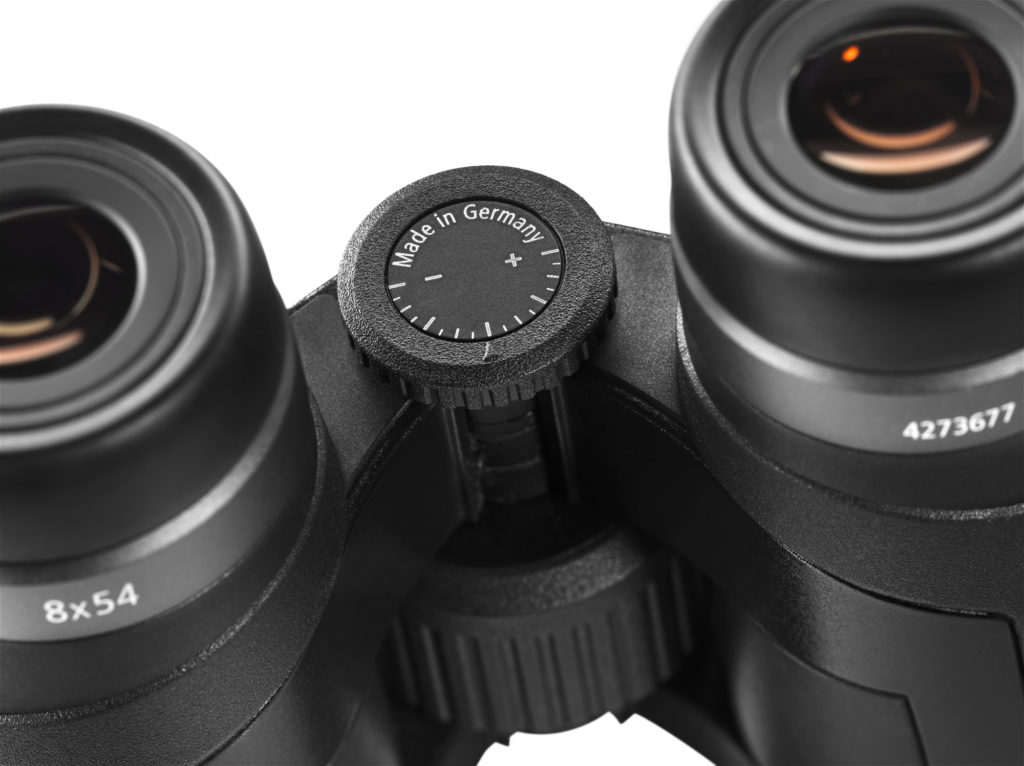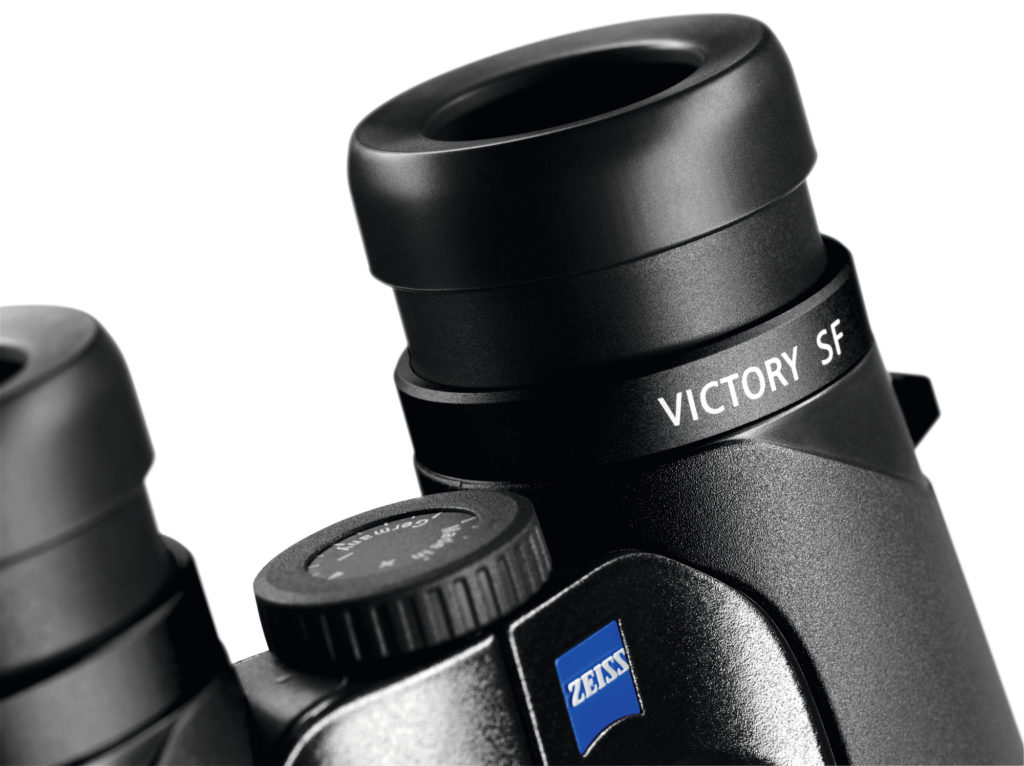Mechanical components – particularly the housing and all moving parts – are the guarantee for decades of protection and correct alignment of the optics.
Housing material
The mounts of the lens elements generally consist of extremely solid aluminum or magnesium. In addition to these two materials, state-of-the-art composites such as glass-fiber reinforced plastic materials are used for the entire housing. In addition to the favorable weight and enormous range of shapes, this allows for the intentional flexibility of the housing which is very beneficial, particularly with bumps and jarring. Containing up to 60% glass, these innovative materials can be optimized for many requirements and are also used for car and aircraft manufacture.
Rubber armoring provides additional protection for binoculars and spotting scopes, ensures a secure grip and absorbs sounds when it accidentally hits something. On all its products, ZEISS selects an optimal mixture of materials to permanently package high-performance optics for use under the toughest conditions.
Focusing
In order to obtain a razor-sharp image at various distances, the lens elements are moved mechanically. A distinction is generally made between internal and external focusing.

External focus
With exterior focusing, the distance is usually set by moving the eyepieces, where the volume of the binoculars always changes. During this process, external air and also small dust particles and moisture are drawn into or pressed out of the binoculars. It is really not possible to seal such systems.
Internal focus
Binoculars with internal focusing are protected considerably better. To focus these models, the internal lens elements are moved only without changing the volume. With the appropriate seal using O-rings, there is no exchange with outside air, i.e. dust and moisture cannot penetrate the housing. This is the only way to manufacture binoculars, which are fully watertight.

Nitrogen filling
With such sealed binoculars – and only with these – it is a good idea to fill the interior with nitrogen or another gas. This prevents the “integration“ of moist air that condenses in the winter and can result in fogging inside the binoculars. All Victory and Conquest binoculars (except Conquest Compact), spotting scopes and riflescopes of ZEISS are protected in this manner.
Diopter compensation
Binocular devices feature diopter compensation to correct different prescriptions in the left and right eyes. Users set this configuration once only. When glasses are worn, the diopter compensation is set to zero because the glasses already correct any existing differences between the eyes. Ideally, such devices should provide an adjustment range of at least +/- 4 D.
Note for people who wear glasses
When used with glasses, the diopter compensation is set to zero, as the glasses already correct any differences between the two eyes.

If someone needs the same correction in both eyes (for example + 2 dptr), the diopter compensation is also set to zero, even when looking into the binoculars without glasses. The difference between the two eyes, and that is all that matters, is zero in this case! With progressive lenses, please always look through the upper part of the glasses (for the distance). The image viewed in long-range optical devices is always infinite!
Eyecup

So that the eye pupils are not too far away from the glass, the eyecups should be turned in when observing with glasses (which further increases the distance between the eye and the eyepiece), without glasses when they are pulled out or turned out.
However, this is only an “approximation” because, especially without glasses, everyone sets the binoculars at a different distance from the eye. Some people literally press the glass into their eye sockets, others hold the glass far in front of them and just touch their eyebrows with their eyecups.
With many ZEISS binoculars, the eyecups can therefore be individually adjusted using locking steps so that everyone can find the right setting. An important point that is often neglected in practice.
Overturn past infinity
Additionally, binoculars and spotting scopes can be focused past infinity. The focusing knob is not yet in the end stop position even when viewing the moon. This play, or reserves past infinity, is useful for shortsighted users who use binoculars without glasses. With the normal infinity setting of the center drive, there would be no crisp image at long distances due to the insufficient refractive power of the glasses. This is not a problem on binoculars which include overturn. For example Victory FL binoculars, can correct up to 7 D. This problem does not exist for farsighted users who focus “less far” without glasses compared with users with normal vision.